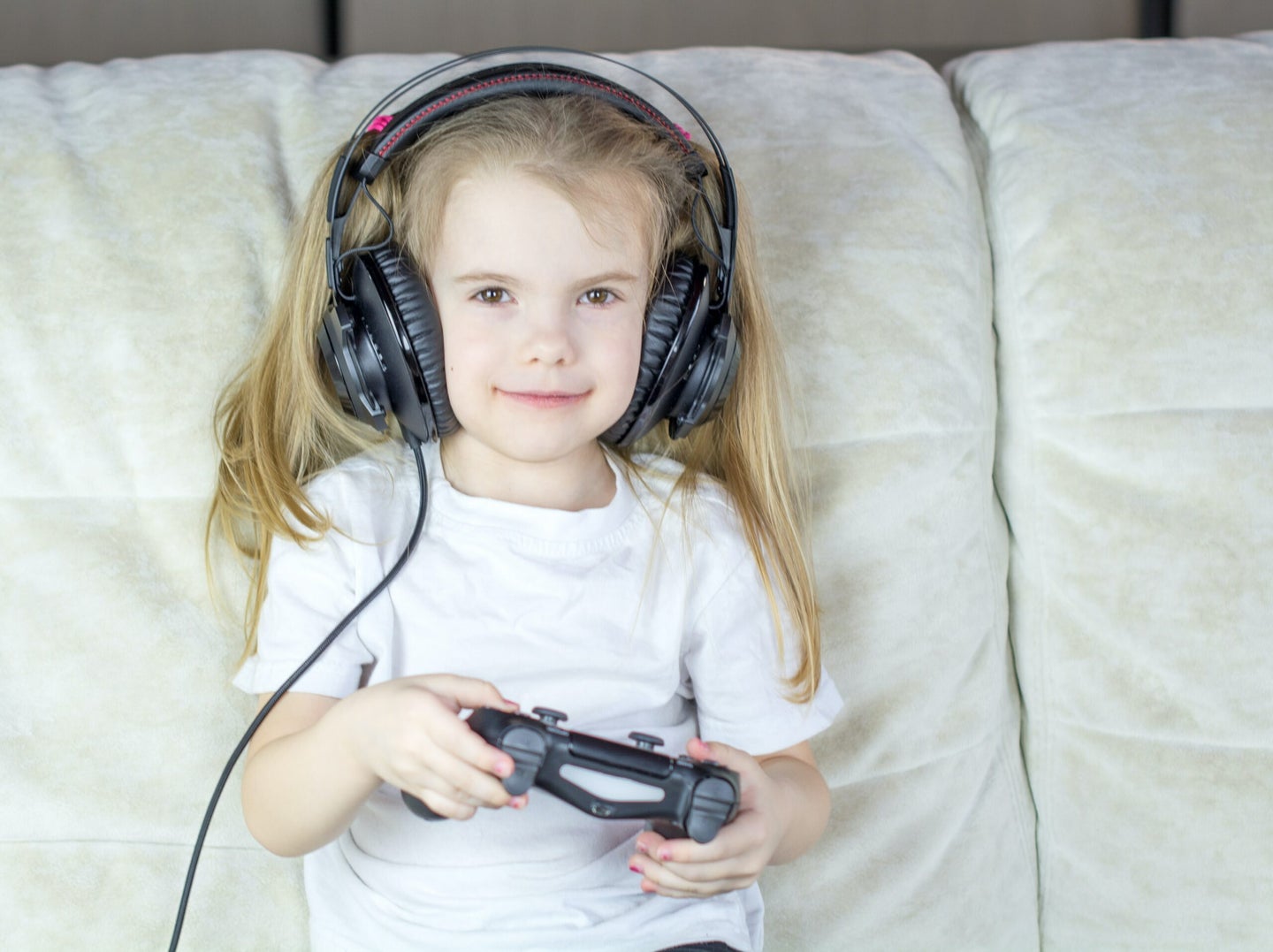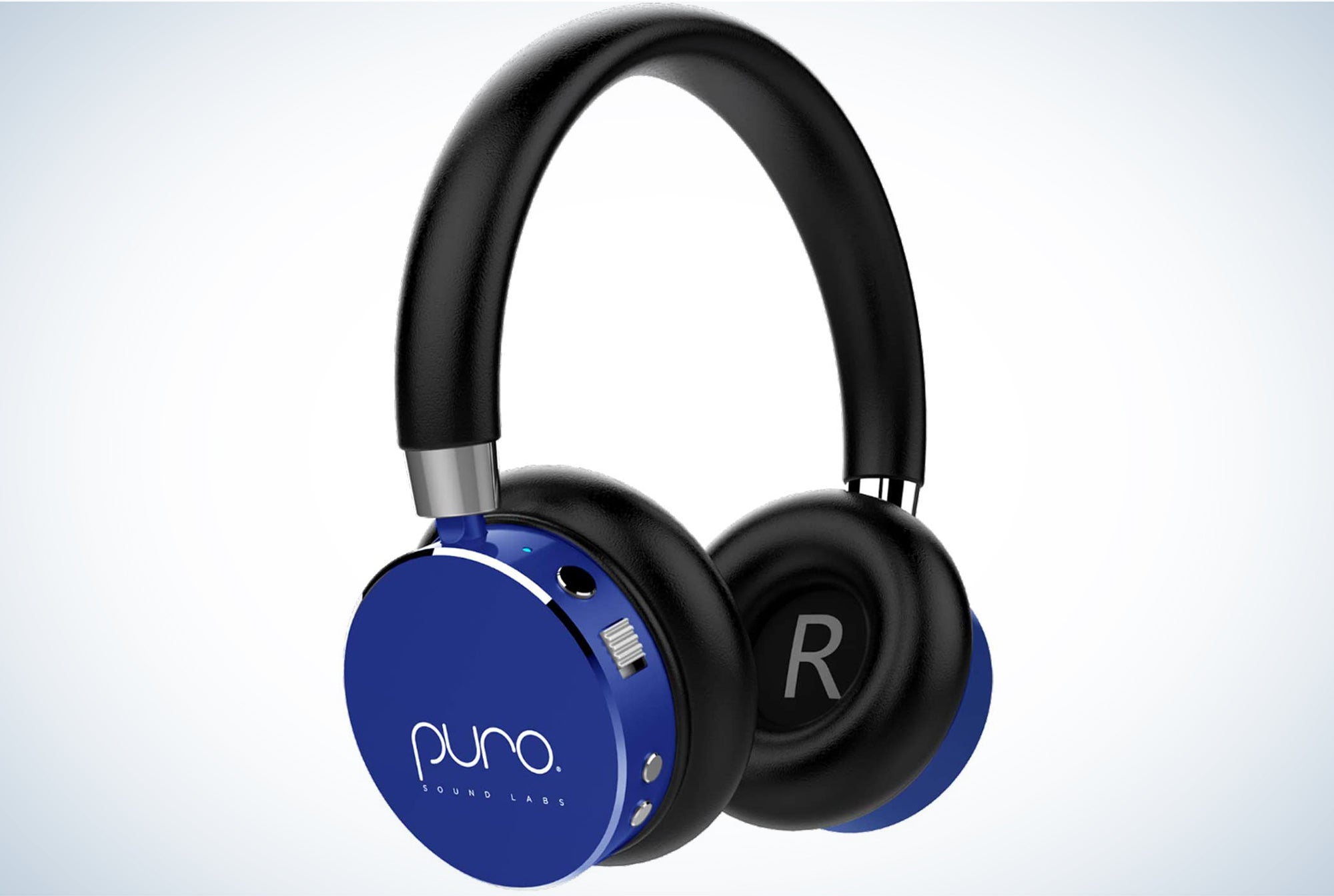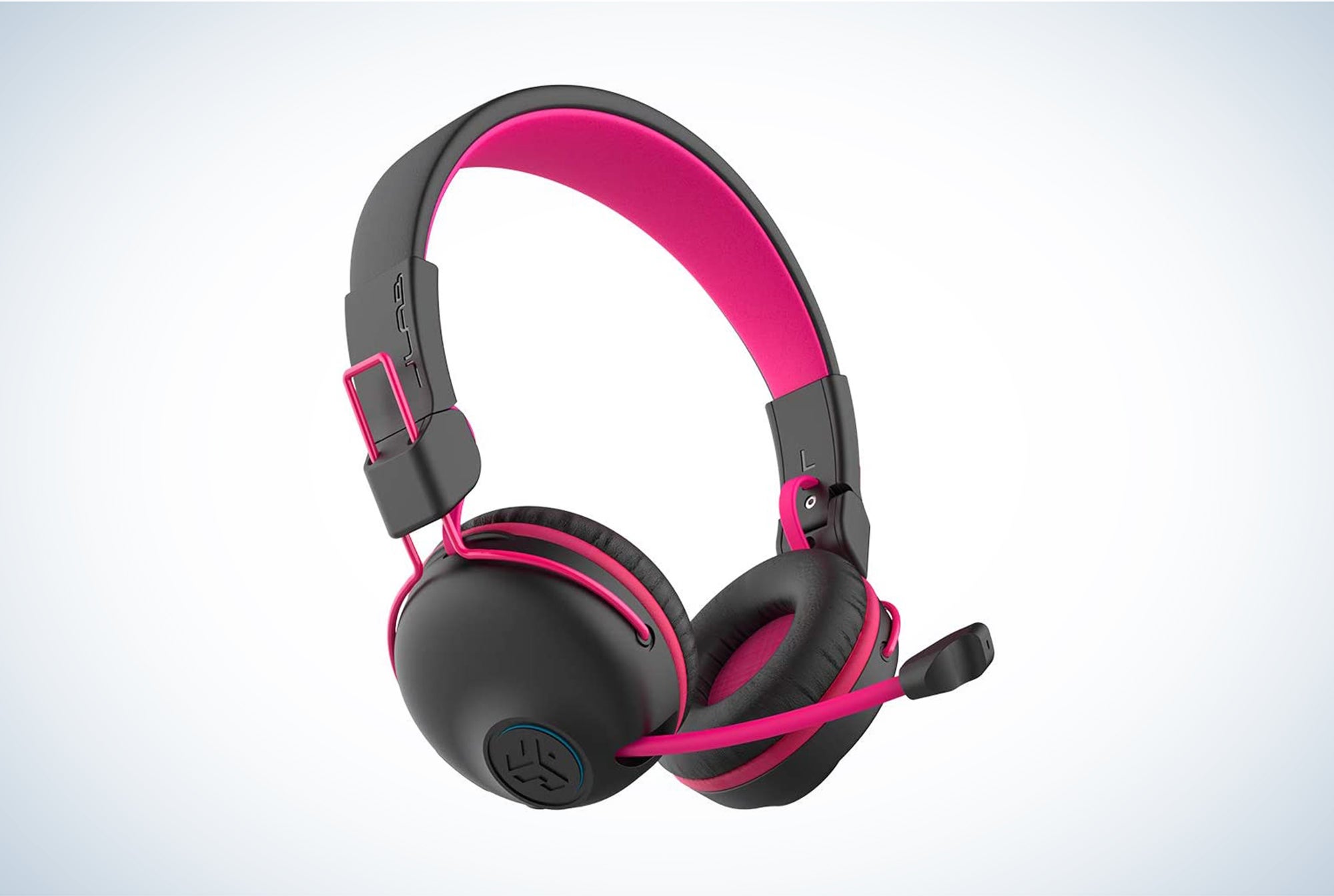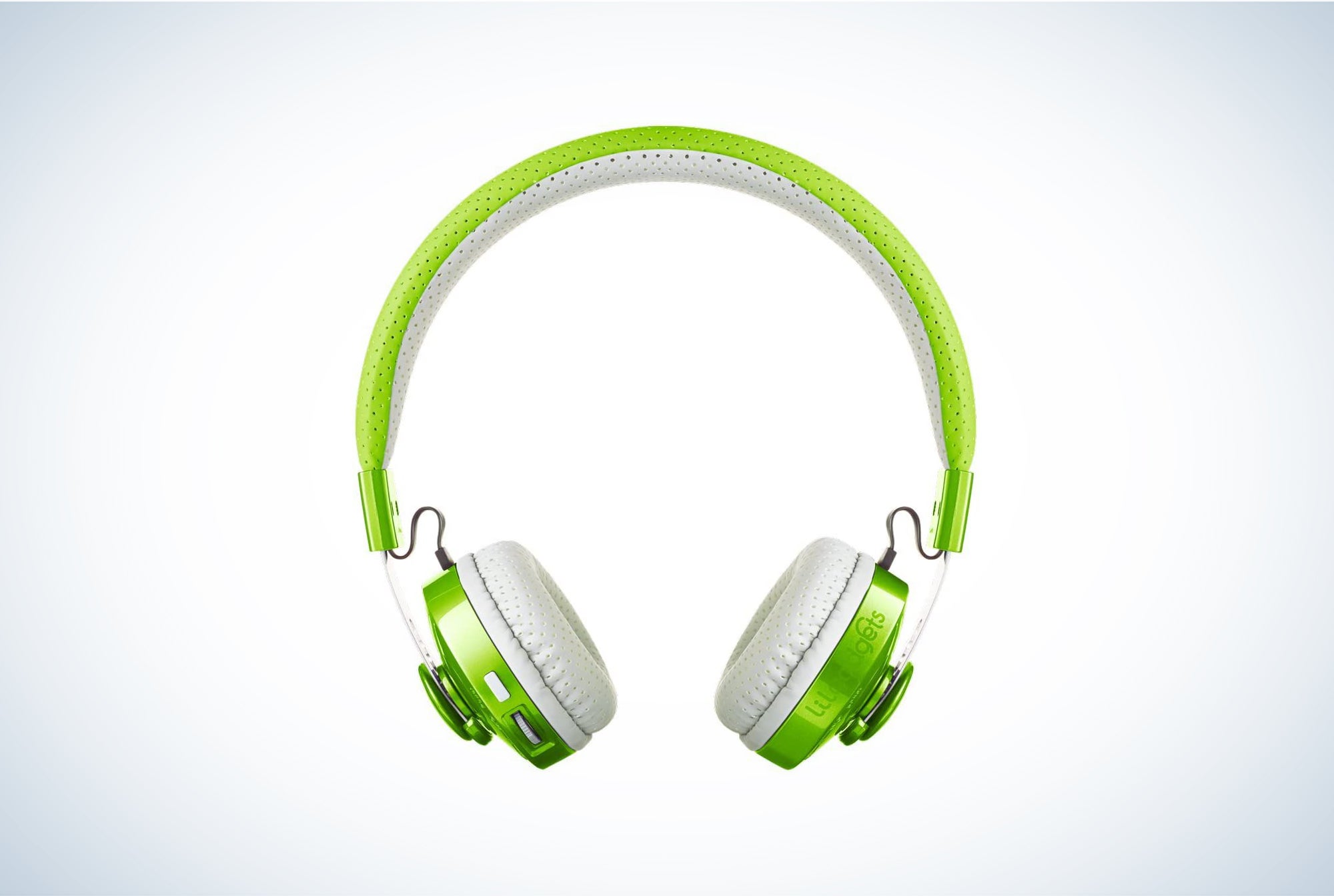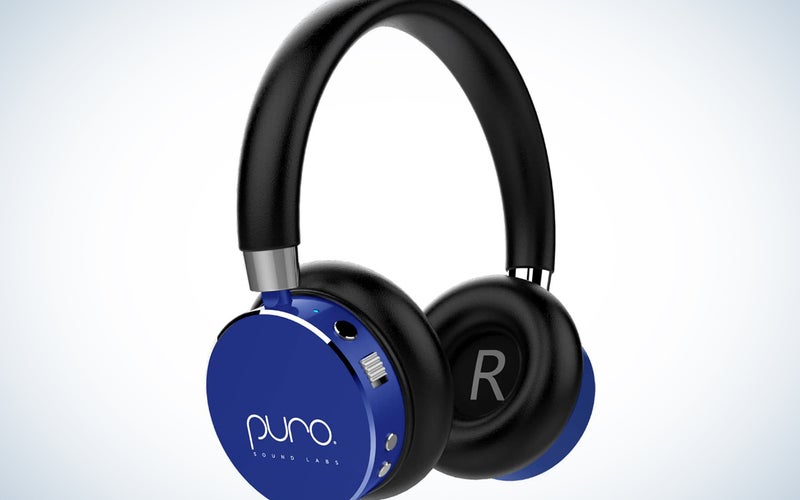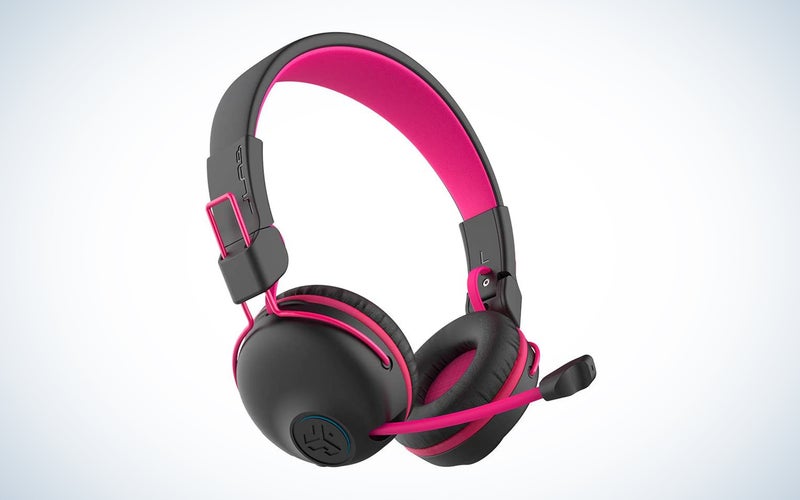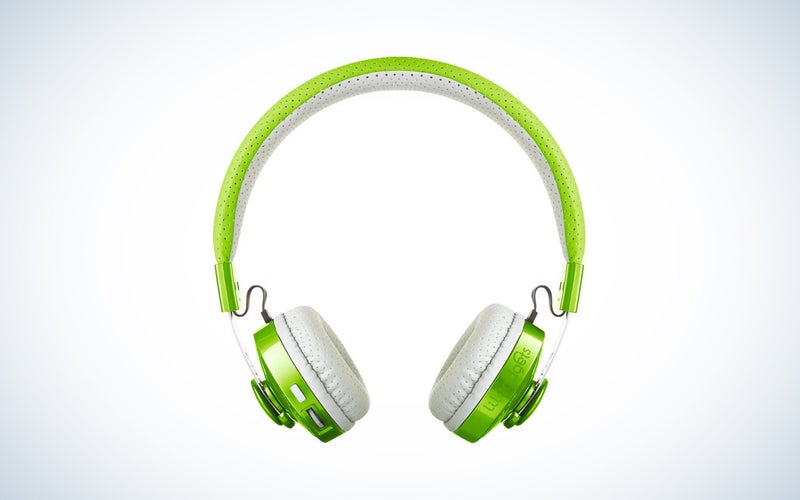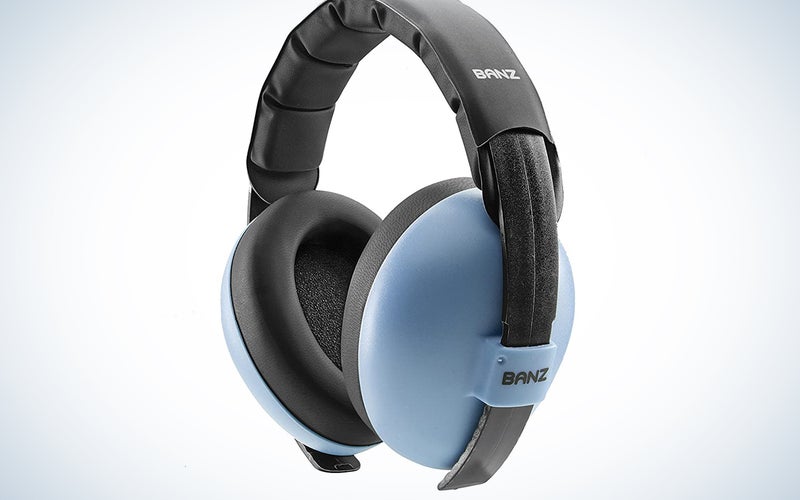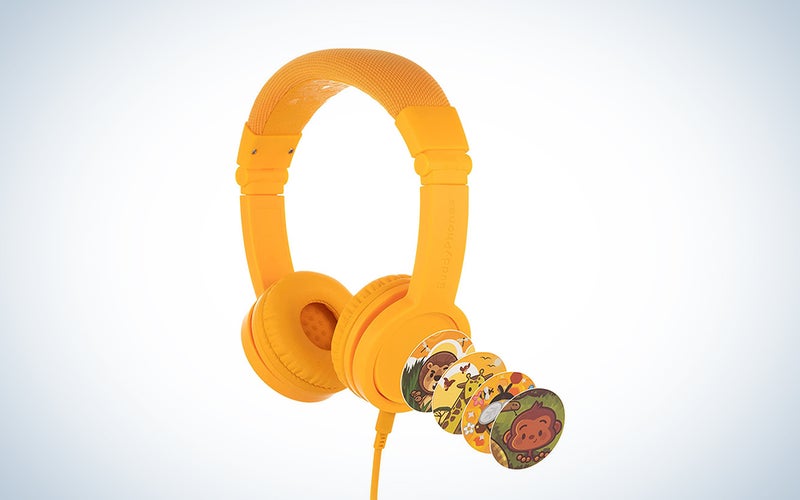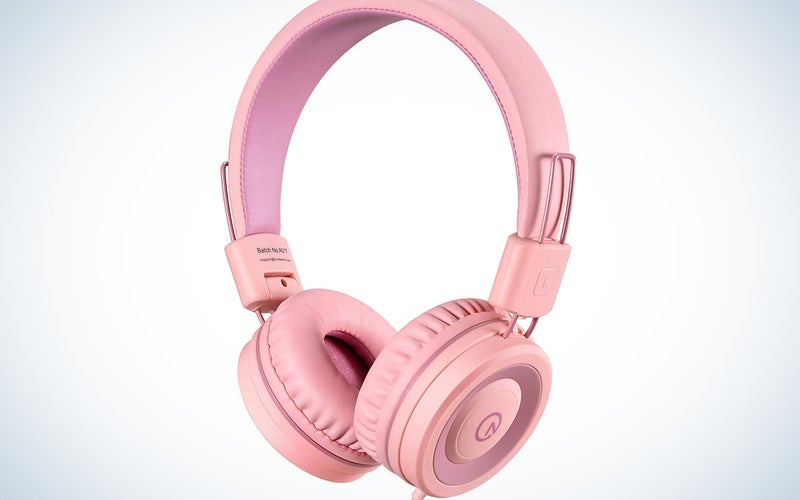We may earn revenue from the products available on this page and participate in affiliate programs. Learn more ›
Whether it’s time for some online learning, you’re about to embark on a family road trip, or you just can’t stand to listen to another episode of “Paw Patrol,” you can help keep your child engaged for as long as necessary with headphones. But before you put random off-the-shelf gear on your little one’s head you want to make sure they’re both comfortable headphones and safe. To help make sure they don’t lose their hearing and you don’t lose your mind, we’ve put together this guide to the best kids’ headphones so the only constant questions you have to answer come from your children.
- Best overall: Puro Sound Labs BT2200 Plus
- Best for young gamers: JLab JBuddies Play
- Best for older kids: LilGadgets Untangled Pro
- Best for babies: Baby BANZ dual-purpose earmuffs
- Best for customization: ONANOFF BuddyPhones Explore+
- Best budget: noot K11 foldable kids headphones
How we selected the best kids’ headphones
There are hundreds of kids’ headphones on the market, so we completed extensive research and consulted first-hand users to select standout models. We focused primarily on fit, durability, and safety features like volume limiting. We also considered some additional accouterments that some families may find useful, like a built-in microphone. We chose units that were easy to use and suitable for various ages so that you can find a great pair of kids’ headphones for even the youngest member of the family.
The best kids’ headphones: Reviews & Recommendations
You want to make sure you’re selecting an age-appropriate pair of the best kids’ headphones that will fit your child and keep them occupied. We want to make sure you’re selecting an age-appropriate pair of the best kids’ headphones that will fit your child and keep them occupied. Are we theeeeeeere yet?!? Almost!
Best overall: Puro Sound Labs BT2200 Plus
Puro
Specs
- Battery life: 20 hours playback, 200 hours standby
- Volume limit: 85 dBA
- Charge time: Up to 3 hours
- Wireless range: Up to 30 feet
- Microphone: Built-in wireless
Pros
- Quality sound with an effective volume limiter
- Solid battery life
- Can daisy chain to another pair
Cons
- Pricey
- May lack durability
- Case can be flimsy
Puro Sound Labs has created a pair of top-tier kids’ headphones that will suit children at almost any age. The Puro BT2200 Plus Bluetooth headphones are equipped with an 85 dB volume limiter that cannot be bypassed regardless of the content or connected device. Passive noise cancellation blocks out 83 percent of background noise, which is helpful for keeping calm and staying focused. The audio quality on these kids’ headphones are quite impressive for a pair of kids’ headphones, even with the volume limit, and the battery follows suit with up to 20 hours of playback and a three-hour charge time. Available in over five colors, this pair features onboard volume control and comes with a carrying case, a 3.5mm cable for wired listening that maintains the volume limit, and a daisy chain cable that allows you to connect with another pair of Puro’s so your kids can watch their favorite movies at the same time.
Best for young gamers: JLab JBuddies Play
JLabs
Specs
- Battery life: 22 hours of playback, 400 hours standby
- Volume limit: 85 dBA
- Charge time: Up to 3 hours, 10-minute quick charge
- Wireless range: Up to 30 feet
- Microphone: Retractable boom microphone
Pros
- Retractable boom mic
- Long-lasting battery with quick charge
- Quick mute button
Cons
- Proprietary charging cord
- Earcups aren’t replaceable
- Material feels cheaper compared to some models
The Play headphones are marketed as a gaming headset, but they certainly double as the best headphones for kids playback and enhanced call quality for remote learning, family Skype calls, and other forms of virtual communication. The boom microphone is situated directly in front of the mouth, which helps isolate your child’s voice and eliminate background noise—a super helpful tool for clear audio, especially if there’s a lot going on at home. The mic is also retractable, so you can get it out of the way when unnecessary. For budding gamers, Game mode utilizes low-latency, boosted mid-to-high frequencies, and Bluetooth 5.0 with aptX and is compatible with most gaming systems, including PlayStation, Xbox, and more. A 3.5mm cable connection is also an option for zero latency. The colorful pads are great if a heated game session runs long (plus they’ll look sharp when your child sees friends in person or on camera, with parental approval). The Play is suitable for ages 6 to 13 with a flexible headband that remains comfortable even for kids who wear glasses, plus an effective 85 dB volume limiter. If you’re looking to prioritize quality conversations with your talkative tykes, but want something slightly less expensive and that skews younger, check out the BuddyPhones School+ wired headphones with mic and an inline answer button.
Best for older kids: LilGadgets Untangled Pro
LilGadgets
Specs
- Battery life: 12 hours playback, 180 hours standby
- Volume limit: 93 dBA
- Charge time: Up to 3 hours
- Wireless range: Up to 30 feet
- Microphone: Built-in wireless
Pros
- SharePort lets you connect multiple headphones without a splitter
- Comfortable
- Fun, colorful, mature design
Cons
- Volume limit goes above industry standard
- Not suitable for young children
- Battery life is middle of the road
The LilGadgets Untangled Pros offer an advanced listening experience for older kids who are about to graduate from children’s technology. Though they are designed for kids ages four and up, we recommend reserving them for preteens and teenagers because the volume limit is higher than the recommended 85 dB. With a limit of 93 dB, listening levels will still be capped but come a bit closer to adult parameters. You won’t be able to control your kids’ volume forever, so this is a great way to encourage healthy habits before they start blasting their music day and night. The colorful styles are fun yet mature, and a 12-hour battery will supply enough music to make it many walks to school. A 3.5mm cable with an inline microphone will keep them connected even when the battery starts to run low.
Best for babies: Baby BANZ dual-purpose earmuffs
BANZ
Specs
- Battery life: 8 hours
- Volume limit: 75 dB
- Charge time: 1 hour
- Wireless range: Up to 30 feet
- Microphone: None
Pros
- Volume control is entirely up to parents
- Limit of 75 dB is suitable for infants’ ears
- Solid noise reduction rating -NRR 31dB
Cons
- Pricey
- Getting the fit just right can be tricky
- Only one color option for the Bluetooth model
While infant earmuffs are a common item to add to your registry, consider going a step further and grabbing this pair of baby Bluetooth headphones from BANZ. Available in two sizes, one for 0-2 years and another for 3 years and up, these headphones reduce outside noise by up to 31 dB, protecting their ears from crowds, sirens, loud music, and more. Plus, they are Bluetooth equipped, which means not only can you quiet the outside world, but you can play their favorite songs and shows at a safe volume, increasing their comfort and calm. There aren’t any onboard controls, which means you’re in charge of volume and, just in case, there is a built-in 75 dB limit. The design is comfortable with foam cushions around the ears and a soft, flexible leather headband. These headphones are also rated by the organization Able Play as being suitable for children with special needs.
Best for customization: ONANOFF BuddyPhones Explore+
ONANOFF
Specs
- Battery life: N/A
- Volume limit: 85 dB
- Charge time: N/A
- Wireless range: N/A
- Microphone: In-line
- Cable: Around 4 feet, with 3.5mm termination
Pros
- Audio capped at 85 dB
- Made with hypoallergenic materials
- Detachable cable preventing snagging
Cons
- No noise cancellation
If you’re looking for a pair of headphones that will make your child stand out from the rest of the crowd, look no further than the ONANOFF BuddyPhones Explore+. These headphones come in six different colors with four included sticker designs to put on the ear cups, and are built with Nordic design and quality—they feature 30mm Neodymium drivers and include an ergonomic wide headband for comfort. Although they’re wired, the cable detaches to prevent a dangerous snag. And, these headphones are made with friendship and sharing in mind, thanks to the built-in stackable audio splitter that can connect up to four pairs of headphones into one device. These headphones include features adult audioheads expect, like a built-in microphone and call/playback button, but limit volume at 85 dB for safe listening. Parents will appreciate that they fold and come with an included travel bag. While you won’t find features common in adult headphones, such as active noise cancellation, the comfy ear cushions can still help block out the distractions of travel and keep your child wrapped up in the music. And if you definitely want to keep them wrapped up only in music, and not wires, BuddyPhones also makes the equally fun and functional School+ Wireless headphones, which are more expensive at $60 but our reviewer found them invaluable during the height of remote schooling in 2021.
Best budget: noot K11 foldable kids headphones
noot products
Specs
- Battery life: N/A
- Volume limit: 93 dB
- Charge time: N/A
- Wireless range: N/A
- Microphone: None
- Cable: 5 feet, with 3.5mm termination
Pros
- Inexpensive
- Flexible sizing
- Passive noise cancellation helps promote lower volume
Cons
- Wired design can be dangerous
- No microphone
- No volume limiter
While the noot K11 headphones forgo some of the safety features we recommend investing in, they are perfectly suitable for young kids to use as long as they have some supervision. These foldable, wired headphones feature a flexible headband, 5-foot braided connection cable, and are available in various bright colors. Noot says the maximum output is around 93 dB, but some report the 40mm drivers can get louder, so make sure you remind your little ones to stay away from the volume control (which can often be digitally capped in your smartphone, etc., just in case). Passive noise cancellation helps isolate the audio and eliminate the need to raise the volume and the lack of onboard controls actually helps keep kids’ fingers away from accidental adjustments. The most attractive thing the K11 headphones have to offer is an under $30 price point, making it more feasible to invest in replacement if you have kids who are tough on their tech.
What to consider when buying a pair of the best kids’ headphones
The best kids’ headphones will provide a safe and satisfying listening experience for children of all ages, but there are a few things you should consider before buying a bundle for your family. While buying a simple set of kid’s headphones should be easy, there are a few features you’ll want to prioritize. Our hearing is super susceptible to damage from continuous exposure to high playback volumes. While this degradation is inevitable as you age, it’s important to prevent any early damage early on in your kid’s life. So, before you place a pair of cans over your little one’s ears, you want to ensure you have read the specs and clearly see safety features proudly listed.
We all know the kids tend to drop, spill, lose, and overuse their things, but that doesn’t mean you should prohibit them from trying new technology. Instead, look for a model designed to fit their specific needs. Could they benefit from a water-resistant model? Is extra cushioning ideal? How about a volume limiter? Will something budget-friendly soften the blow of a lost pair? These are all important things to consider before purchasing, so let’s look at a few points.
What’s the deal with volume limiting?
Unlike adult headphones, many kids’ headphones feature a volume limiter, usually capped at 85 decibels. In theory, this means they cannot turn their music, movies, or TV show audio above the level acknowledged as damaging. It’s recommended that adults not exceed 85 dB when listening, though we’ve all needed to pump up the jams from time to time. And children’s ears are particularly susceptible to damage. Their ears are smaller, which means loud noises can be perceived as 20 dB louder than what an adult eardrum would process. Protecting your child’s developing auditory system is essential, and a volume limiter is a great first step. Plus, 85 dB isn’t quiet by any sense of the word (think loud traffic), so you shouldn’t worry too much about your child bothering you to turn up the sound. Along the way, encourage your child to develop a habit of avoiding prolonged exposure to loud music, especially if it’s being beamed directly into their ears.
Are there other safety features on kids’ headphones to consider?
Yes, alongside a volume limiter, you want to consider a few other features, especially for younger children. While a pair of wired headphones can occasionally be less expensive, it’s safe to go with a pair of Bluetooth headphones, eliminating any wires that could get tangled up around your kid and cut off circulation or respiration. Luckily, kids’ headphones have kept up with the times, and there are plenty of available options that utilize a wireless connection.
You also want to avoid using a foldable pair until your kid is a little older. The hinges of foldable headphones tend to pinch even adult fingers. Though you may lose out on compact storage, you’ll save yourself some tears, a worthy trade-off.
Finally, make sure you limit listening time in general. Even at lower volumes, continuous noise exposure can contribute to hearing loss. Your child should never listen to eight hours of consecutive sound through headphones at any volume. You should also encourage your child to take frequent listening breaks; consider instituting a headphone rest after every movie, television episode, Zoom school class, or hour of music.
Are you taking the kids on a trip?
If you need a pair of Bluetooth kids’ headphones for a long road trip or international flight, make sure you check out battery life before hitting “Add to Cart.” We all know that somehow, inevitably, the outlet next to your specific airplane seat won’t work, so rather than deal with a whiny kid for the final four hours of your journey, invest in a pair that can last for up to 20 hours on a single charge. While we don’t recommend you let them listen to their music that entire time, having a long-lasting battery will undoubtedly help you make it through a delayed plane, highway traffic, and more.
If you have an older child and want to ensure there won’t be a battery issue, you can check out a few wired models or Bluetooth pairs that come with an optional auxiliary connection. Just make sure you keep an eye on them, especially if they are starting to fall asleep while listening.
Does your child need a microphone?
If your child is school-aged, chances are they have experienced some remote learning, are on their way to getting a cellphone, have started experimenting with online gaming, or may still need to sit through a class or two on Zoom. If this sounds like your child, consider selecting a pair of kids’ headphones equipped with a microphone. Not only will you be able to have some extended peace and quiet while they FaceTime with Grandma, but you’ll also be able to reach them on the phone anytime, anywhere, even when they’ve cranked up the volume.
How much are you looking to spend?
While excellent adult headphones can retail for many hundreds, even thousands, kids’ headphones are typically much more affordable. Generally speaking, children’s headphones focus more on comfort and safety than audiophile-quality sound, which we don’t have a problem with. We’d be surprised if your six-year-old kid started to complain about their cans’ lack of pace, rhythm, and timing. So wait until they have developed a more refined auditory palette in their teen years before investing in anything too expensive. Especially because, as your child ages, they are destined to grow out of their headphones, if they don’t lose or break them first. You should already be expecting to purchase a couple of pairs before they mature. On average, while you can find pairs for under $30, the best kids’ headphones usually retail between $45 and $95.
FAQs
Q: Are headphones or earbuds better for kids?
While kids can use earbuds, headphones might be safer and more comfortable. Rather than directly targeting the eardrum, headphones introduce sound to the outer ear first, which can help reduce harmful exposure somewhat. However, the overall difference might be negligible depending on your kid’s listening habits. Plus, earbud sizing can be tricky, especially for smaller ears (and deeper-insertion earphones are just a no-go for fear of eardrum puncture), so over-the-ear headphones are often more comfortable and easier for kids to wear. Ultimately, for older children, it’s a matter of personal preference as you monitor their use.
Q: What is a good brand of headphones for kids?
While many brands manufacture headphones for kids, we stand by the products listed and recommend you check out their other models as well. Puro Sound Labs make well-designed, protective wired and wireless headphones for kids and adults; they also have a great pair of hearing protection earmuffs. JLab has a variety of kids’ headphones options at an affordable price, including gaming headsets, toddler headphones, and Bluetooth models. We also recommend checking out LilGadgets for older kids who want ample color options.
Q: Are noise-canceling headphones bad for kids?
No, noise-canceling headphones for kids are not bad as long as their wearers are supervised. Noise cancelation can be particularly calming and enhance focus, allowing them to tune out the outside world. In fact, noise-canceling earmuffs are highly recommended for toddlers and babies to protect their eardrums in loud environments. Noise cancelation can also reduce the chances of damage or hearing loss because your kid won’t be trying to cancel out the outside world with volume alone. You’ll just want to keep an eye on them since they won’t be able to hear any critical signals, like alarms or shouts.
Final thoughts on the best kids’ headphones
- Best overall: Puro Sound Labs BT2200 Plus
- Best for young gamers: JLab JBuddies Play
- Best for older kids: LilGadgets Untangled Pro
- Best for babies: Baby BANZ dual-purpose earmuffs
- Best for customization: ONANOFF BuddyPhones Explore+
- Best budget: noot K11 foldable kids headphones
With so many options out there, it can be hard to feel confident choosing a pair of headphones for your child. However, there are many pairs that keep your kid’s safety in mind with an effective volume limiter, extended battery life, and a comfortable design. Headphones will keep your kid calm and quiet during travel, focused during classes or phone calls, and conflict-free when it comes to TV time with their siblings. If you think it’s to give your little one a bit of listening privacy (and yourself a break from “Let It Go,” “Baby Shark,” or “CoComelon” reruns), you’re ready to start looking at the best kids’ headphones.
Why trust us
Popular Science started writing about technology more than 150 years ago. There was no such thing as “gadget writing” when we published our first issue in 1872, but if there was, our mission to demystify the world of innovation for everyday readers means we would have been all over it. Here in the present, PopSci is fully committed to helping readers navigate the increasingly intimidating array of devices on the market right now.
Our writers and editors have combined decades of experience covering and reviewing consumer electronics. We each have our own obsessive specialties—from high-end audio to video games to cameras and beyond—but when we’re reviewing devices outside of our immediate wheelhouses, we do our best to seek out trustworthy voices and opinions to help guide people to the very best recommendations. We know we don’t know everything, but we’re excited to live through the analysis paralysis that internet shopping can spur so readers don’t have to.
